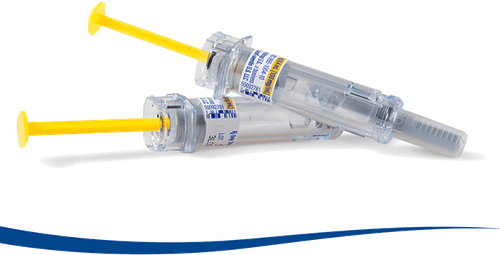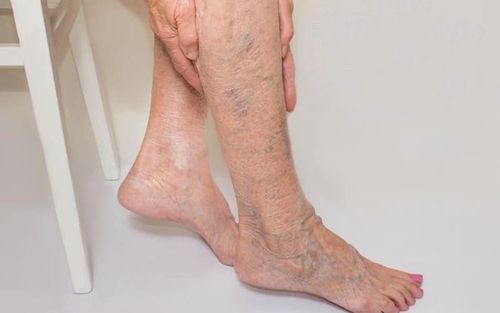This is an automatically translated article.
The article was professionally consulted with Master, Doctor Nguyen Minh Son - Interventional Cardiologist - Department of Medical Examination & Internal Medicine - Vinmec Nha Trang International General Hospital.Varicose veins can lead to serious complications, when blood stasis in the veins forms clots and drifts to the heart, causing pulmonary embolism, which can lead to death. Therefore, each person needs to know the level, what is the manifestation of varicose veins, ... to detect and treat the disease early.
1. Varicose veins - information to know
Veins carry low-oxygen blood back to the heart, while arteries carry oxygen-rich blood from the heart to other organs in the body. Varicose veins are swollen veins (visible to the eye). The veins are blue, bulging, and zigzag. If left untreated, the condition will get worse over time.How many types of varicose veins are there? There are 3 types of veins in the legs: superficial veins (located closest to the skin), deep veins (located between muscle groups) and perforating veins (connecting superficial veins to deep veins). Varicose veins are common in the superficial veins of the legs – they occur when there is high blood pressure inside the veins.
What is the manifestation of varicose veins? Specifically, the patient will feel heavy, tired, or numb. This symptom is worse if you stand or sit for too long. In addition, the patient may also experience night cramps, see varicose veins on the legs, or tender varicose knots. Sometimes the skin on the feet becomes discolored, red, irritated, rash, or even ulcerated. If you have severe varicose veins, you are at risk for deep vein thrombosis, which manifests as sudden swelling of the legs. This is a serious and potentially fatal complication that requires immediate medical attention.
Factors that can increase the risk of varicose veins include: Family history, being overweight - obese, smoking, lack of exercise, having deep vein thrombosis, requiring standing work. or sitting for too long, pregnant women, ages 30 - 70,... Women have a higher risk of varicose veins than men.
2. Learn about the grades of varicose veins
2.1 CEAP classification of varicose veins
The diagnosis is mainly based on the clinical presentation of varicose veins. Currently, the clinical diagnosis of chronic varicose veins is divided into 6 stages depending on the degree of skin damage according to CEAP classification.CEAP classification (1995): Widely applied worldwide and still applied in clinical practice. In which, C is clinical, E is pathogenesis, A is anatomy and P is pathogenesis; Advanced CEAP Classification (2004): More descriptive of the disease than the classic CEAP classification, mainly applied in clinical studies. In terms of grade, varicose veins are divided into levels from C0 - C6 depending on the condition and stage of disease development. Specifically:
C0: There is no manifestation of venous disease, so it cannot be observed or palpable; C1: Varicose veins in the form of a reticular or spider web, less than 3mm in diameter; C2: Varicose veins over 3mm in diameter; C3: Edema in lower extremities but no changes in skin; C4: Skin changes due to venous pathology: C4a: Venous pigmentation/eczema; C4b: Milian's dermatophytosis/white atrophy; C5: There are changes in the skin as above, accompanied by healed ulcers; C6: There are changes in the skin as above, accompanied by an active ulcer.

Giải đáp có mấy loại suy giãn tĩnh mạch?
2.2 Detailed manifestations of varicose veins
Grade 0: Mild varicose veins. At this stage, the veins have begun to weaken but are not clinically apparent. Patients can only detect varicose veins if using subclinical tests or imaging techniques; Level 1: The veins begin to dilate (small size about 1mm), can appear in the areas below the inner ankle, thighs, calves,... At this level, varicose veins in the legs. manifestations are leg itching, leg fatigue, leg pain (this condition is worse when standing for a long time or sitting a lot) but the signs are still quite faint, sometimes not so patients often do not pay attention; Grade 2: The veins have dilated more than 3mm. From this stage on, the signs of the disease will become more obvious. Specific symptoms include: Pain, numbness in the legs, heaviness in the legs, and prominent blue-violet veins on the skin; Level 3: Appears swollen feet or calves, leg swelling in the evening or when standing a lot; Level 4: Due to the cause of stagnation of blood in the periphery, the patient's foot skin will be darker, accompanied by symptoms of leg edema, scleroderma and keratinization. When you press your finger on the varicose area, it will create an indentation; Level 5: Varicose veins of the legs manifest as veins floating on the skin, starting to have ulcers in the legs; Level 6: There are many ulcers on the legs, large and small ulcers alternate with each other, the ulcers are quite deep and difficult to heal.3. Treatment of varicose veins according to disease levels
From the level of the disease, the doctor will designate the appropriate treatment for varicose veins for each patient:3.1 Mild varicose veins (0 - 1)
If this disease is detected in grades 0 or 1, then the treatment will be very simple because the veins are only mildly dilated. Early treatment from the early stages helps prevent varicose veins from progressing to severe stages, and at the same time prevents dangerous complications later.In the early stages, if varicose veins are not too serious and do not cause discomfort, the patient does not need to use drugs but just need to change diet, exercise and living. Specifically:
Diet: Use foods rich in fiber, vitamins C and E, drink lots of water, limit spicy, hot, greasy foods and beer, wine,...; Mode of living: Do not sit or stand for too long, should change positions continuously, walk more; Exercise mode: Patients can choose suitable sports such as yoga, swimming, walking, cycling, ... At the same time, patients should wear medical socks during practice.

Ăn thực phẩm giàu chất xơ giúp hỗ trợ điều trị suy giãn tĩnh mạch cấp độ nhẹ
3.2 Advanced varicose veins (2 - 3 - 4)
At this stage, varicose veins manifest clearly, so the patient can easily recognize. Because symptoms greatly affect daily activities, patients need to use therapeutic drugs to relieve symptoms and improve quality of life.Patients pay attention to use the drug exactly as prescribed by the specialist. Patients should absolutely not use or abuse the drug on their own because it can encounter many dangerous side effects. At the same time, patients with advanced varicose veins also need to pay attention to adjusting their diet and living more scientific and healthy activities to support disease treatment and improve recovery.
3.3 End stage varicose veins (5 - 6)
If varicose veins progress to the final stage, the patient needs to be careful before dangerous complications such as venous thrombosis, vein rupture, skin necrosis sores,... During this period, if If conventional methods of treatment are not effective, the patient will be indicated for surgery. The doctor will surgically remove the varicose veins and the patient will no longer be "tortured" by uncomfortable symptoms.However, if the root cause of varicose veins is not resolved, then the patient is still at risk of recurrence in other venous areas. Therefore, patients still need to take appropriate preventive measures in both daily life and diet.
The above information has helped readers understand the manifestation of varicose veins and how the level is to get the most appropriate treatment option. During treatment, the patient must strictly follow all the instructions of the specialist.
Please dial HOTLINE for more information or register for an appointment HERE. Download MyVinmec app to make appointments faster and to manage your bookings easily.













